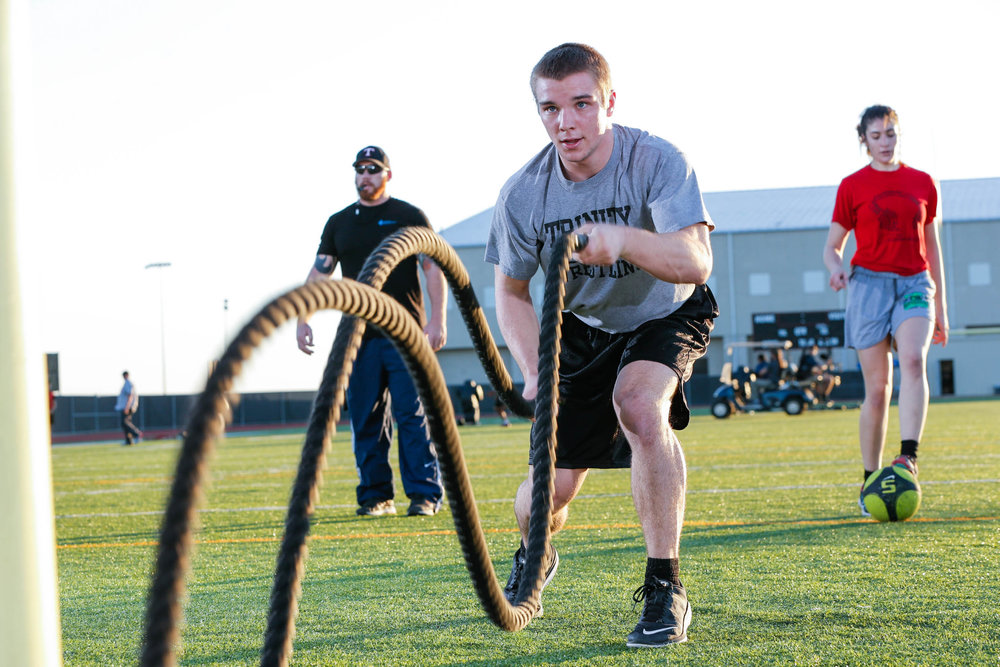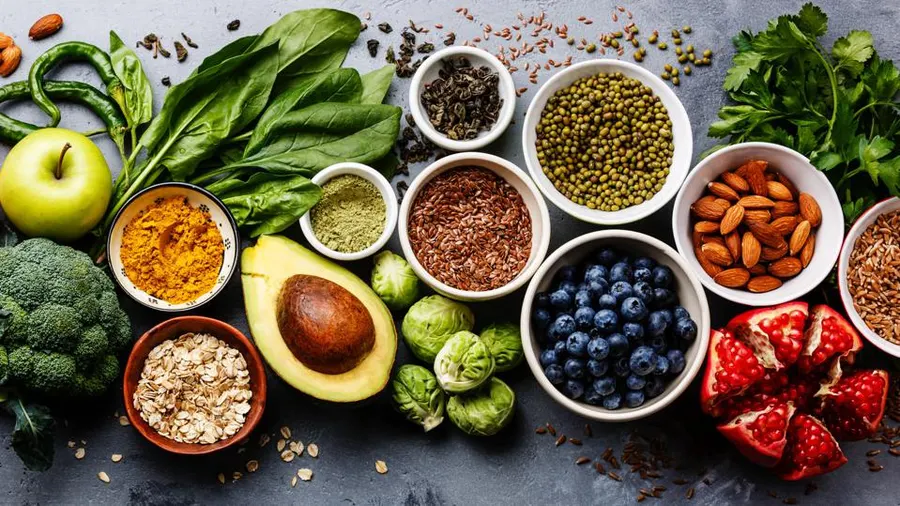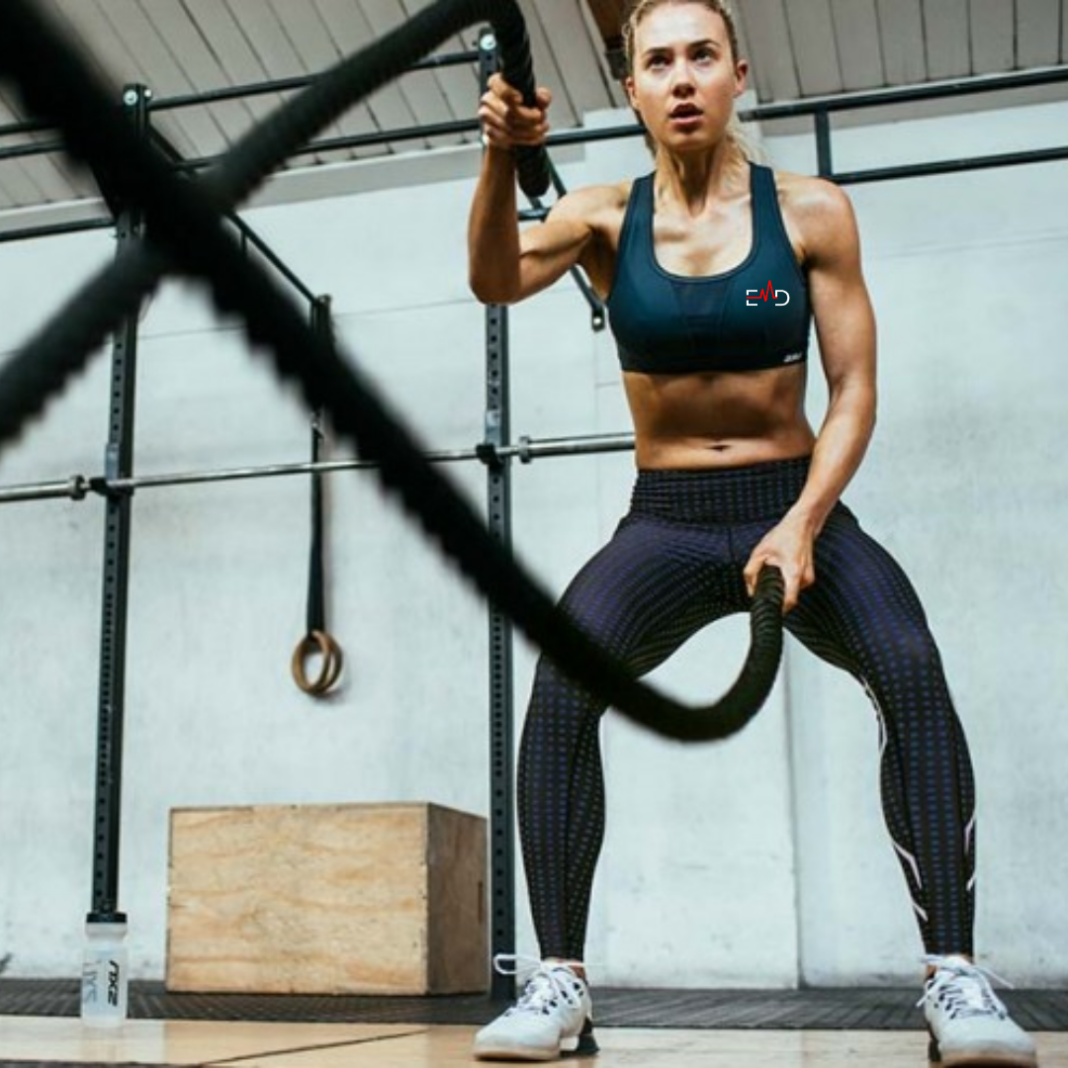Exercise Daily – In terms of training and fitness, as well as weight reduction One of the most frequent concerns is “Do the HIIT exercises burn fat?” The concept of High-Intensity Interval Training (HIIT) has been gaining popularity in recent years because of its ability to burn calories and enhance fitness. Let’s explore the concept behind HIIT and learn how it aids in burning fat and discussing the most effective HIIT workout routines to help maximize fat loss.
Hi-Intensity Interval Training (HIIT) involves short bursts of intense exercise and is followed by periods of relaxation or low-intensity exercise. The training method involves alternating between intense effort and recuperation by pushing your body to its limits. The HIIT training regimen can be tailored to various workouts, such as cycling, running as well as bodyweight exercises, and many more.
How HIIT burns Fat
HIIT exercises are extremely effective in reducing fat mass due to their effect on body metabolism. In high-intensity intervals, your body is in an anaerobic condition, which means it is depleting oxygen and relies on stored energy, which includes fat for fuel to sustain vigorous exercise. The accelerated bursts of exercise raise your metabolic rate which causes your body to burn calories even after your exercise has ended. This phenomenon is called the “afterburn effect” or the “afterburn result” or excessive exercise-related oxygen consumption (EPOC).

Benefits of Exercises that Incorporate HIIT
- Effective Fat Burning: HIIT training can help you generate more calories in a shorter time than traditional exercise routines that are steady-state.
- Increased metabolic rate: The postburn result of HIIT increases your metabolism for hours following the exercise, which results in the continual burning of calories.
- Improved Cardiovascular Health: HIIT exercise tests the cardiovascular system enhancing endurance and heart health.
- Muscle Retention: In contrast to long-duration exercise, HIIT training can assist in keeping the lean muscle mass and burn fat, and encouraging the appearance of a toned body.
- Time-Saving: HIIT exercises are perfect for people who have a busy schedule since they give you a full-body workout that is shorter.
Most effective workouts for Burning Fat
In order to burn fat, you must perform exercises that raise your heart rate and boost the rate of metabolism. Combining these exercises with a balanced diet will maximize your fat-burning capabilities and allow you to achieve the desired results quicker.
1. Hi-Intensity Interval Training (HIIT)
Training with HIIT involves brief bursts of intense training and then periods of relaxation or activity that is low-intensity. This type of training can help to burn off calories after you have completed your workout because it boosts your metabolism for durations of hours. The most common HIIT exercises include burpees, sprinting, as well as mountain climbers.
2. Circuit Training
Circuit training is a combination of strength training exercises and cardiovascular workouts. By performing an array of exercises quickly in a short time with a minimum of rest and a minimum of rest, you will maintain your cardiovascular rate and burn more calories. Circuit training exercises could include lunges, push-ups jump squats, or jumping Jacks.
3. Strength Training
Training for strength is vital to fat burning because it assists increase the size of your muscles. The greater the muscle mass you have the greater your metabolic rate and this leads to a greater burning of calories. Include exercises such as squats deadlifts, bench presses as well as rows in your exercise routine to build your muscle mass and help burn off fat efficiently.
4. Cardiovascular Exercises
Traditional cardiovascular exercises like cycling, running, jogging and swimming are excellent to burn fat. They stimulate muscles of all sizes and boost your heart rate, which leads to improved cardiovascular health as well as improved fat-burning.
5. Tabata Training
Tabata exercise is a type of intense interval training that is based on a particular procedure. It involves doing the exercise at maximal intensity for 20 minutes before taking 10 seconds of relaxation, repeating the process for a total of 4 minutes. Tabata workouts are easy but extremely effective for burning calories and improving fitness levels overall.
6. CrossFit Workouts
CrossFit exercises incorporate a variety of functional movements that are performed with high intensity. The workouts are focused on endurance, strength, and flexibility. They typically include components of cardiovascular exercises, as well as bodyweight movements. CrossFit exercises provide a complete body workout that is great to burn fat.
7. Plyometric Exercises
Plyometric exercises, often referred to by the name of jump-training, are intense movements that work various muscle groups simultaneously. Box jumps, burpees, and jump lunges can be effective in creating strength, burning calories, and increasing overall athleticism.
8. Swimming
It is an easy full-body exercise that can help to burn off substantial quantities of fat. Swimming makes use of all muscles majorly, increases the endurance of the cardiovascular system, and boosts the strength of your muscles. It doesn’t matter if you go for freestyle, breaststroke, or butterfly swimming, it is an extremely efficient exercise for burning fat.
9. Cycling
Cycling on a stationary bicycle or out on a trail or trail a great exercise that burns fat. It’s a low-impact exercise that is enjoyable for individuals of all levels of fitness. Cycling can help strengthen lower body muscles as well as torch calories which makes it an excellent option to burn fat.

HIIT Workouts for Athletes’ Performance
High-Intensity Interval Training (HIIT) involves the alternation of short bursts intense exercise, and short intervals of recovery. This method of training pushes the body to work to its fullest capacity and has been demonstrated to have significant health benefits.
1. The benefits of HIIT for athletes
HIIT has many benefits for athletes who want to improve their performance. It increases cardiovascular endurance improves speed and power and increases anaerobic power, increases metabolism, and aids in weight loss. Furthermore, HIIT workouts are time-efficient and can be adapted to fit the individual needs of training.
2. The Designing of a Successful HIIT Workout
To design a highly effective HIIT exercise, it is essential to take into consideration the goals of the participant as well as their current fitness level and the requirements of their sports. The exercise should consist of a combination of intense workouts as well as active recovery times to guarantee optimal results.
3. Warm up and Cool down in the HIIT
A proper warm-up is vital prior to beginning a HIIT exercise. It helps prepare the body for the intense workout ahead and decreases the chance of injuries. A cool-down exercise after the workout can help the body heal and reduces muscle soreness.
4. Nutrition and Hydration for High-Intensity Training Athletes
Nutrition and hydration are both essential to are essential to optimize the effects of HIIT-based workouts. The athlete should eat a balanced diet with a sufficient amount of carbohydrates, protein, as well as healthy fats. Drinking plenty of water before and during training is essential to ensure the best performance.
5. Injury Prevention in HIIT
To avoid injuries during HIIT exercises, participants must concentrate on maintaining the correct form and technique when exercising. The gradual increase in intensity, duration, and length of exercises is essential to avoid overexertion and lower the chance of injury.
6. Monitoring Progress and adjusting the Workout
Monitoring progress regularly is crucial for tracking progress and making needed adjustments to your HIIT training routine. The athletes can utilize different metrics like heart rate and power output, speed, and recovery time to assess their performance and make adjustments to their routines.
7. Integrating HIIT into sports-specific training
HIIT can be incorporated into training programs specific to sports to boost performance in a specific sport. Through incorporating exercises that replicate the movement patterns and energy systems employed in the sport athletes can enhance their overall performance as well as specific skills needed to excel in their chosen sport.
8. Workouts with HIIT for different Sports
Different sports place different requirements on the human body. training programs for HIIT can be adapted to meet these requirements. For example, sprint intervals for athletes in track or sprints for soccer players, or agility exercises for basketball players, HIIT is able to be customized to increase the performance of any sport.
9. Rest and recovery days in the HIIT
Rest and recovery days are vital to any training regimen, including high-intensity training. It is important for athletes to allow their bodies adequate time to heal and adjust to the demands of intense exercises. The inclusion of days off and active recovery exercises into their training regimen will help avoid overtraining and decrease the chance of burning out.
10. The Most Common Errors You Must Avoid the HIIT Training
Although HIIT can be extremely useful, it’s not all good. There are some common mistakes that athletes must avoid. For instance, not focusing on proper form, training too much in the wrong way, not having a proper warm-up or cooling-down routine, inadequate nutrition, and not having sufficient recovery time. If they are aware of these errors, athletes will be able to get the most benefit from their HIIT training.
11. The Future of HIIT and Sports Performance
As the sport performance field continues to grow, HIIT is likely to become more important. Coaches and researchers are always looking for new ways and techniques to enhance HIIT training and enhance athletic performance. The future is filled with amazing possibilities to integrate HIIT into specific training programs for sports.

Do you lose weight faster during summer?
There’s evidence which suggests that people could lose weight more quickly in the summer months. The reason is that the heat can boost your metabolism, which may result in more calories being burned. However, it’s crucial to remember that the impact is tiny, and is not enough to ensure that you’ll lose weight just due to the summer temperatures.
When it comes to losing fat, summer can indeed be a favorable season due to the various opportunities it offers for high-intensity interval training (HIIT) workouts. Interval training is known to be an effective method to burn fat and increase calorie expenditure. During a HIIT session, the heart rate is elevated through short bursts of high-intensity exercise followed by brief recovery periods.
This high-intensity interval training stimulates the body to burn more calories and fat compared to steady-state cardio. The intense bursts of exercise increase oxygen consumption and metabolic rate, allowing you to continue burning calories even after the workout is over. Activities like jumping rope, sprinting, or using a stationary bike in a HIIT format can significantly contribute to fat loss and improved body composition.
HIIT training also enhances insulin sensitivity, which helps regulate blood sugar levels and aids in fat burning. Additionally, the intense nature of HIIT workouts promotes the development of lean muscle, further increasing your metabolic rate and calorie burn. By incorporating HIIT into your summer fitness routine, you can maximize the benefits of high-intensity intervals to burn fat faster and achieve your desired body composition.
How fast can you achieve the summer body you want?
The length of time required to achieve the “summer body” depends on a range of factors, such as the point of departure, your goals for fitness, and the frequency with which you exercise. As per general guidelines, you should get significant results after 6-8 weeks of establishing an exercise routine regularly.
The concept of HIIT (High-Intensity Interval Training) has become widely popular for those who want to burn calories and achieve a summer body quickly. Unlike traditional exercises that involve longer steady-state cardio sessions, HIIT exercises involve short, intense bursts of exercise followed by recovery periods. This form of exercise can be completed in as little as 30 minutes per day, making it one of the most efficient ways to increase metabolism and burn fat.
Studies have shown that just a few weeks of HIIT can lead to increased fat burning and build lean muscle, thanks to the intense bursts of exercise that stimulate the body’s metabolism. HIIT also improves the body’s resting metabolic rate and increases the production of human growth hormone, both of which contribute to a healthy metabolic system.
The intense effort followed by short recovery periods triggers a phenomenon known as EPOC (Excess Post-Exercise Oxygen Consumption), causing the body to burn calories even hours after your workout. This results in greater overall calorie expenditure compared to low-intensity workouts. Additionally, HIIT has been shown to reduce blood pressure and improve cardiovascular health. So, if you want to burn calories quickly and efficiently, incorporate HIIT into your fitness routine and enjoy the benefits of increased fat-burning and improved body composition.
The Best HIIT Workout Routines for Burning Fat
- Tabata Training Tabata Training HIIT includes 20 seconds of maximal effort followed by 10 seconds of rest. It is repeated for an overall of four minutes. It can be done by doing exercises like squats burpees as well as jump lunges.
- Interval Running Alternate between sprinting, walking, or walking. For instance, you could run for thirty seconds and then be followed by 60 minutes of walking or jogging. Repeat for several intervals.
- Circuit Training: Make an exercise circuit and then perform each exercise with a set time (e.g. 30 seconds, for example) with a short break between exercises. Repeat the circuit several times.
- Bodyweight HIIT: Use exercises that target a variety of muscles, including push-ups, mountain climbers, and jumping squats. Each exercise should be completed for a specific period of time, then follow by a brief rest.
HIIT Vs. Other Exercise Forms
Although HIIT is extremely effective in losing fat and calories, it’s important to think about what you want to achieve in your fitness and personal preferences. Other forms of training like steady-state cardio or resistance training, help improve general health and fitness as well as weight reduction. Combining various types of exercise can give you a comprehensive fitness routine.
Safety Aspects of the HIIT
Before you begin HIIT exercises, it’s important to think about the following guidelines for safety:
- Speak to a medical professional particularly if you suffer from any medical condition that is pre-existing.
- Make sure you warm up properly prior to each HIIT workout to get your body ready for the intense workouts.
- Begin with a moderate intensity before gradually increasing the intensity as your fitness levels improve.
- Be aware of your body’s signals and take your rest days when needed to prevent injury and overtraining.
Tips for a Successful HIIT Workout
- Make sure you are following the correct technique and form to maximize the benefit of each exercise, and avoid injuries.
- Vary the exercise and intensity levels to ensure that your workouts are difficult and prevent plateaus.
- Combine cardiovascular exercise with exercises that focus on strength to target various muscles.
- Record how you are progressing by recording your workout time, duration, and intensity as well as improvement in performance over time.
Monitoring Progress and Result
To track your progress throughout HIIT exercises and your fat loss journey, you can use:
- Smartwatches or fitness trackers to track heart rate, calorie burn, and time of exercise.
- Body composition measurements include body weight, fat percentage, and waist circumference.
- Fitness apps with the ability to track your workout, and allow you to track and review your exercise routine.
Incorporating HIIT into Your Fitness Routine
To include HIIT exercises in your fitness routine efficiently take a look at the following tips:
- Establish the frequency: Start with a couple of HIIT workouts every week. Then, gradually increase the frequency the more you improve your fitness.
- Combine it all: Mix the HIIT training with other types of exercise, like yoga or strength training, for a complete fitness regimen.
- Find out what you like Explore different types of HIIT exercises and variations to discover exercises you love and stick to over time.
Diet and nutrition for optimal Fat burning
While HIIT exercises are beneficial to burn fat, however, eating a balanced diet is just as important. Take note of the following tips for a healthy diet:
- Concentrate on whole, nutrient-rich foods such as fruits, vegetables protein lean Whole grains, as well as healthy fats.
- Drink enough fluids throughout your day.
- Check portion sizes to make sure you’re eating the correct amount of calories per day to achieve your goals.
- Contact a registered dietitian nutritionist for individualized guidance according to your particular requirements and preferences.

Many Myths About the HIIT Program and fat loss
- The myth is that HIIT is the sole method of burning fat.
- Truth: Although HIIT is extremely efficient other forms of training can help in weight loss and general fitness.
- Myth: HIIT workouts have to be intense and long in order to be efficient.
- Truth: HIIT exercises can differ in intensity and duration which allows for personalization according to your individual fitness level and objectives.
- Myth: HIIT exercises are just designed for elite fitness.
- Real truth HIIT is a sport that can be modified to suit people who are just beginning by altering your intensity and duration and rest intervals.
Conclusion
In the end, HIIT workouts are a powerful method of burning calories and improving general fitness. The combination of intense training and recovery intervals increases your metabolism, leading to greater calorie burn and weight loss. By incorporating HIIT exercises into your exercise routine, you will get results that are efficient in a shorter time. Make sure you are safe and listen to your body and eat a healthy diet to maximize fat-burning and overall well-being.
FAQs Do HIIT workouts burn fat?
Are HIIT workouts appropriate for people who are just beginning?
It’s true that HIIT exercises can be adjusted for beginners by adjusting the amount of time and intensity. It is important to begin at a level that is comfortable and gradually increase the level of difficulty.
How do you think the length of a HIIT exercise lasts?
The duration of HIIT training can vary from 10 to 30 minutes, based on your fitness level as well as your goals. The most important thing is to maintain the intensity of your exercise.
Can you do HIIT exercises at your home?
Absolutely! A majority of HIIT exercises require minimal to no equipment, which makes them perfect for workouts at home. It is possible to use the bodyweight exercise or add simple fitness tools such as dumbbells and resistance bands.
Do HIIT exercises help me shed belly fat?
HIIT exercises can help in general fat loss, which includes the reduction of belly fat. However, reducing spots isn’t possible and fat loss happens all over the body.
What is the best time to exercise? HIIT exercises?
Beginning with a couple of sessions per week is an ideal start. Once you feel more confident and your fitness increases, you can increase the frequency to 4 sessions a week. Make sure you allow time for breaks and recovery days between.




